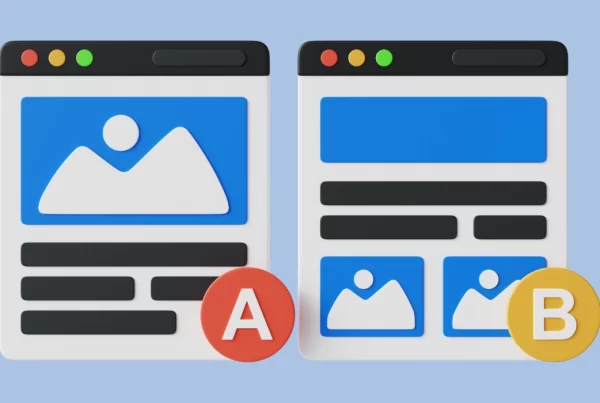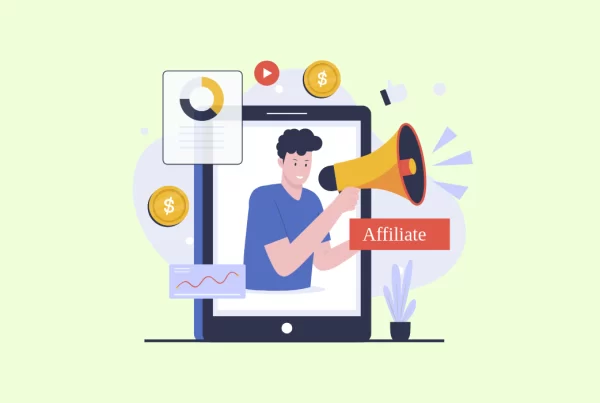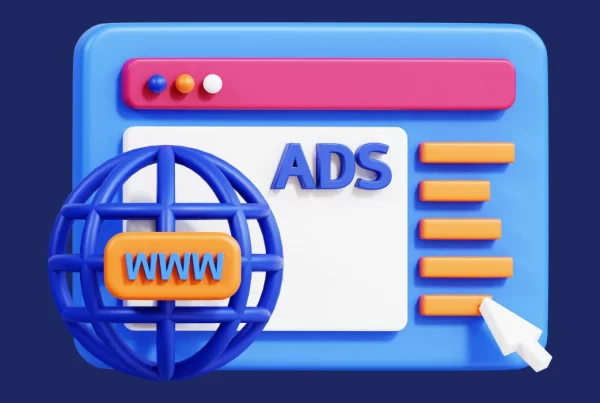Last Updated on 1 year ago by Ecem Ertürk
In the quest for profit optimization, astute businesses are turning their focus towards a pivotal aspect of success: customer value maximization. Deep diving into the insights provided by Customer Lifetime Value (CLV) not only unveils incredible potential for enhanced profitability but also serves as a refined business growth strategy. By understanding and tapping into the genuine worth of CLV, companies can unlock strategies that foster not just transient spikes in revenue, but sustained business expansion and prosperity. A digital marketing agency plays a crucial role in this process, leveraging data-driven approaches to improve customer retention, enhance engagement, and ultimately maximize CLV, driving long-term profitability and growth.
Understanding Customer Lifetime Value
In the realm of customer valuation and business analytics, understanding the Customer Lifetime Value (CLV) is more than just a metric; it’s a pivotal growth measurement and a compass directing businesses towards profitability and long-term success. As businesses strive to optimize their strategies, a coherent grasp of CLV provides an extensive view of customer worth throughout a business relationship.
Defining Customer Lifetime Value
Customer Lifetime Value represents the total revenue a business can reasonably expect from a single customer account throughout the business relationship. In essence, it’s the financial embodiment of customer relationships, signifying the aggregate value of a customer’s transactions coupled with their potential future worth. By defining and analyzing CLV, companies leverage predictive business analytics to fortify their market positioning.
The Importance of Measuring CLV in Business Growth
Measuring CLV is not just about assigning numerical values; it’s about appreciating the intricate tapestry of customer interactions over time. It stands at the confluence where customer retention strategies and growth indicators converge to highlight the lucrative potential within a company’s existing customer base. Insight into CLV aids in informed decision-making, steering revenue growth through targeted customer retention efforts and intelligent upselling initiatives.
Calculating CLV: The Key Metrics You Need
Arriving at an accurate CLV necessitates a blend of historical data and predictive analytics, grounded in several key metrics that when computed harmoniously, unlock the secrets to a customer’s projected value. These metrics include:
- Average Purchase Value
- Average Purchase Frequency Rate
- Customer Value
- Average Customer Lifespan
Combining these figures, businesses are empowered to calculate CLV and frame their strategic lens to view customers not as single opportunities, but as long-term assets.
How Customer Lifetime Value Affects Profitability
Proficiency in gauging Customer Lifetime Value (CLV) is paramount for entities eager to discern the trajectory of their profitability. Insight into CLV not only unfurls the potential revenue a customer can generate over their association with a brand but also lays the groundwork for calibrated investment in retention and acquisition strategies. It’s this discerning lens through which the virtuous cycle of profitability increase and revenue enhancement can be clearly visualized and meticulously managed, keeping the dreaded customer acquisition cost at bay.
Linking CLV to Business Revenue
The correlation between CLV and business revenue is indisputable, with the former acting as a barometer for sustained financial health. A robust CLV indicates a harmonious confluence of customer satisfaction, brand loyalty, and continued patronage—all heralds of a flourishing revenue stream. Such customers are not just passive recipients of a brand’s offering; they are active proponents, contributing to an advantageous word-of-mouth phenomenon that no amount of direct advertising can replicate.
Customer Retention vs. Acquisition and Their Impact on CLV
When juxtaposing the fiscal implications of customer retention versus acquisition, the scales tilt significantly towards the former. Consolidating existing customer relationships typically demands less expenditure than the vigorous endeavors needed to acquire new patrons. Prudent investments in customer service, personalized experiences, and loyalty incentives are instrumental in catalyzing retention, thereby escalating the CLV and ensuring a direct influence on the bottom line. The subtle art of retaining a customer is, thus, a testament to a business’s profound understanding of its audience and inexorably leads to a profitability increase.
- Retaining a customer is significantly more cost-effective than acquiring a new one, often by a factor of up to 5x.
- Enhanced CLV stems from targeted retention strategies, proven to catalyze revenue enhancement much more reliably than acquisition efforts.
- Decreasing the customer acquisition cost can markedly uplift a business’s profitability margin, making CLV-centric strategies a fulcrum for financial success.
With proper emphasis on elevating CLV, businesses anchor themselves in a position of strength where revenue streams are not just preserved but enlarged, constructing a robust foundation for enduring profitability.
Strategies for Improving Customer Lifetime Value
With the modern market’s emphasis on sustainable growth, businesses continuously search for methodologies to increase the lifetime value of their clients. Elevating customer lifetime value (CLV) is not a one-off initiative; it requires a strategic intertwine of customer experience, personalization, and insightful data analytics. By examining the advantages of personalization and the power of data analytics, organizations can unlock a myriad of CLV improvement strategies that resonate with the needs and preferences of their customers.
Personalization Tactics to Enhance Customer Experience
Personalization sits at the heart of an exceptional customer experience. It’s about showing your customers that you recognize them as individuals with unique preferences and needs. Here are practical personalization tactics businesses can employ:
- Segment your customers to deliver more relevant product recommendations and services.
- Utilize behavior tracking to understand individual customer journeys and tailor interactions accordingly.
- Offer customized discounts and promotions based on customers’ purchase history and browsing behavior.
- Engage through personalized communication, addressing customers by name, and reflecting their past interactions with your brand.
Leveraging Data Analytics for Customer Insights
Data analytics provides the blueprint for understanding and enhancing customer lifetime value. Utilizing the right analytic tools, businesses can sift through customer data to gain predictive insights and inform strategic decisions:
- Analyze customer behavior to identify patterns and predict future purchase trends.
- Use data insights to optimize customer touchpoints and streamline the buyer’s journey.
- Assess the customer feedback for real-time adjustments to products and services.
- Implement a culture of data-driven decision making to identify areas for CLV improvement.
In conclusion, a focused application of personalization and data analytics not only enhances customer experience but progressively builds upon the strategies critical for elevating customer lifetime value. Businesses that harness these CLV improvement strategies can attain growth that is both dynamic and sustained.
Incorporating Customer Lifetime Value into Business Decisions
Modern enterprises are increasingly recognizing the pivotal role that customer lifetime value (CLV) plays in strategic decision-making processes. By embedding a customer-centric strategy across various facets of their operations, companies are fostering a more intimate connection with their customer base. This approach is not just theoretical; it is a practical path to fortifying a business’s long-term financial health.
Adopting a customer-centric strategy is no longer an option but a necessity in today’s competitive markets. By prioritizing CLV, companies can craft product development blueprints that resonate with their most valuable customers’ needs and preferences. Similarly, pricing strategies become more dynamic when they are influenced by detailed insights into the customer’s value over their lifecycle with the brand. Customer service and sales strategies that are layered with CLV data not only offer personalized experiences but also drive enhanced customer satisfaction and loyalty.
- Product Development: Integrate CLV findings to innovate products that cater to the most profitable customer segments.
- Pricing Strategy: Employ CLV data to determine pricing models that maximize both value to customers and profit margins.
- Customer Service: Utilize business intelligence tools to tailor customer service operations in a way that optimizes CLV.
- Sales Strategies: Leverage insights from CLV analytics to fine-tune sales tactics, ensuring higher conversion rates among high-value customers.
Well-known brands across various industries have harnessed the power of CLV to steer their business strategies. This shift towards a value-centric approach has not only fortified their market position but also amplified their revenue. It stands as a testament to the transformative impact of integrating sophisticated business intelligence with customer lifetime value analysis into strategic decision-making. As these success stories continue to multiply, they offer a clear blueprint for other companies aiming to place customers at the heart of their operations.
Best Practices for Customer Engagement and Retention
Securing customer allegiance and repeat business entails more than just the provision of quality products or services; it requires a multifaceted approach to engagement strategies and retention practices. Leading companies understand the pivotal role these elements play in maximizing customer lifetime value (CLV). Through targeted loyalty programs and a nurturing corporate culture, businesses can lay a robust foundation for sustainable growth and profitability.
Crafting Loyalty Programs that Boost CLV
Loyalty programs are not uniform; they must be tailored to fit the unique contours of your business and customer base. The most successful programs extend beyond mere transactional benefits, fostering genuine relationships and delivering personalized value to the consumer. A well-structured loyalty program not only encourages repeat purchases but also elevates the overall brand experience, reinforcing customer retention.
- Rewarding consistent purchasing behavior with discounts, exclusive offers, or early access to new products.
- Employing gamification to create an enjoyable and engaging reward structure.
- Implementing tiered benefits that cultivate a sense of exclusivity and aspiration among customers.
Creating a Customer-Centric Culture
An organization’s culture significantly impacts how customers perceive and interact with a brand. A customer-centric culture emphasizes the value of every customer interaction and encourages employees to go above and beyond in delivering exceptional service. This internal ethos is the bedrock upon which effective engagement strategies and customer loyalty programs are built, ensuring that every department’s actions contribute positively to retention best practices.
- Training and empowering employees to make customer-focused decisions.
- Gathering and acting on customer feedback to continuously improve the customer experience.
- Aligning company values with customer needs to show commitment to not just meeting, but exceeding expectations.
Industry leaders, such as Amazon and Apple, have set benchmarks in prioritizing customer experiences by seamlessly integrating engagement strategies within their corporate culture. The results speak volumes, manifesting in enhanced CLV and industry-leading customer retention rates. These industry exemplars demonstrate that when a company places customer engagement and loyalty at the heart of its operation, it not only fosters loyalty but also charts a course for enduring success.
Tools and Technologies for Tracking Customer Lifetime Value
In an increasingly competitive business landscape, leveraging advanced technical solutions for monitoring Customer Lifetime Value (CLV) is indispensable. The emergence of sophisticated CRM technology, enriched with AI analytics, has revolutionized the way companies track and interpret customer data. These innovations allow for a more nuanced understanding of customer behaviors, preferences, and potential value over time.
Advanced CRM Solutions for CLV Monitoring
Today’s CRM systems are much more than simple databases—they are comprehensive platforms that integrate sales, marketing, and customer support data to provide a holistic view of the customer journey. Empowered by machine learning, CRMs can now predict future buying behaviors, calculate precise CLV, and segment customers accordingly. Businesses utilizing these CRM technologies have experienced unprecedented precision in customer tracking tools, which facilitates data-driven decision-making and targeted customer engagement.
- Automated CLV reporting for real-time insights
- Integration with sales pipelines to track interactions and transactions
- Customizable dashboards for visualization of CLV metrics
Utilizing AI for Predictive Customer Lifetime Value Analysis
The synergy between AI analytics and CLV provides businesses with an edge in predicting future market trends and customer behaviors. AI-driven predictive models analyze vast datasets, uncovering patterns that human analysts might overlook. Harnessing the power of AI, companies can anticipate the needs of various customer segments, tailor their outreach, optimize resource allocation, and ultimately boost profitability through refined customer valuation techniques.
- AI algorithms that assess purchase probabilities and forecast future spending
- Machine learning models that continuously refine CLV predictions based on new data
- Behavioral analytics for identifying at-risk customers and implementing proactive retention strategies
Customer Segmentation Based on Lifetime Value
Unlocking the full potential of customer relationship management involves a deep dive into customer lifetime value (CLV) to understand and capitalize on the behaviors of distinct customer groups. Through the strategic application of CLV data, businesses can illuminate the path towards cultivating high-value customers—those who offer greater profitability over time.
Identifying High-Value Customer Segments
The identification of high-value customers is a mission-critical process that demands a data-driven approach. By analyzing purchasing patterns, transaction frequency, and customer loyalty, businesses can segregate their customers into segments that reflect their relative value. This vital classification enables companies to judiciously allocate resources and tailor their customer engagement strategies to foster higher value relationships.
Targeting and Personalization Strategies for Different Segments
Once high-value customers are identified, brands can embark on crafting targeted marketing initiatives finely tuned to the preferences and needs of each segment. By personalizing communication and offers, businesses not only enhance the customer experience but also significantly increase the chances of upselling and repeat purchases. Such differentiated marketing efforts ultimately lead to a reinforced customer base and a more robust bottom line.
- Utilize data analytics to segment customers based on CLV.
- Develop targeted messaging that resonates with each customer group’s unique characteristics and needs.
- Invest in loyalty programs that reward high-value customers and encourage ongoing engagement.
Case studies from leading companies such as Amazon and Starbucks illustrate the effectiveness of using CLV for customer segmentation. These companies have pioneered the use of targeted marketing techniques to not only recognize high-value customers but also to create personalized experiences that significantly reinforce their market positions. By following their lead, businesses can harness the power of customer segmentation to achieve superior market outcomes.
CLV-Driven Marketing: Budget Allocation and ROI
In today’s competitive business environment, aligning marketing budgets with customer lifetime value (CLV) has become a cornerstone of sustainable growth and enhanced profitability. By concentrating spending on consumers with higher CLV, organizations can optimize their marketing budget and significantly improve the return on investment (ROI) from their marketing campaigns. This approach emphasizes the cultivation of long-term customer relationships over short-term gains, ensuring a strategic investment of resources that supports future revenue streams.
Optimizing Marketing Spend by Focusing on High CLV Customers
Targeting customers with a high CLV allows businesses to make more informed decisions about where to allocate their marketing funds. The rationale is simple: customers expected to bring higher value over time merit a greater share of the marketing budget. Firms can deploy a variety of tactics to enhance the experience and retention of these valuable customers, which may include premium customer service, tailored communication, and customized offers. This strategic allocation not only maximizes the efficiency of marketing spend but also contributes to more profound and prosperous customer relations.
Measuring the ROI of CLV-Centric Campaigns
Quantifying the success of CLV-focused marketing efforts is vital for justifying budgetary decisions and adjusting strategies. To measure the ROI of these initiatives, marketers are increasingly turning to advanced analytics tools that track customer engagement, conversion, and retention in real-time. This enables marketers to see a clear picture of how customer value translates into tangible business outcomes. By consistently monitoring ROI, businesses can iterate and refine their marketing approaches, ensuring that every dollar spent is working effectively to promote customer loyalty and maximize lifetime value.












